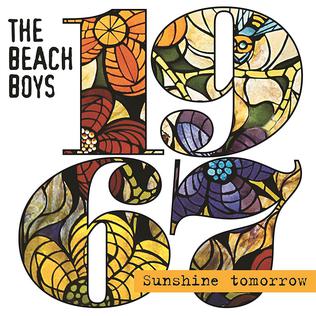
As we don’t claim to have any legal authority or expertise, please forgive some simplification. There’s this 50-year copyright rule, wherein forgotten or buried recordings by certain bands must be claimed and/or released under threat of slipping into public domain. Like other bands and artists of their heritage, the Beach Boys catalog department took advantage of streaming trends and began quietly issuing digital albums in order to beat that pesky rule. Starting in 2013, every December or so (sometimes earlier) a title would appear offering a bounty of vault tracks from the Boys.
The Big Beat 1963 consisted mostly of Brian Wilson songwriting demos, while the following year’s
Keep An Eye On Summer was loaded with session highlights and
Live In Sacramento 1964 provided something of an expansion on
Beach Boys Concert. Following the
Uncovered And Unplugged edition of
Party!, and
Pet Sounds and
Smile having already been mined for deluxe box sets, the next handful of copyright extension releases was actually pressed onto CDs.
Whoever was in charge knew which albums were getting the most revisionist-theory love, so 1967—Sunshine Tomorrow picked up more or less where the Smile box left off, but rejigged the chronology. The first disc is devoted to Wild Honey, which some folks say is superior, beginning with the first-ever true stereo mix of this very short album (save “Mama Says”, which is still in mono), followed by a couple dozen session outtakes and some contemporary live tracks, though “Aren’t You Glad” comes from a 1970 concert. The second disc jumps back several months to reveal 18 minutes of session highlights from said its predecessor, the labored but laconic Smiley Smile. But they truly bury the lede by including the first official release of the notorious unreleased Lei’d In Hawaii album.
This project was originally designed to re-establish the band as a force to be reckoned with in the wake of the Summer of Love. Smiley Smile was about to be released, so they went to Hawaii to record a live album, with Brian in tow for his first live appearances with the band since the end of 1964 (and his last for another few years). The concerts didn’t go so well, and neither did the live-in-the-studio sessions that happened to make up the difference. Wild Honey was then quickly recorded, and released only three months after Smiley Smile.
What would have been Lei’d In Hawaii combined the later studio recordings with a few songs from rehearsals for the live show. It’s a strange mix of old and new material, beginning with a nearly tongue-in-cheek introduction before a faithful cover of the Box Tops’ “The Letter” that just grinds to a halt. Brian’s electric organ unfortunately dominates the songs, which are frankly inert, including a changed perspective on the retitled “Help You, Rhonda” and a cover of the Mindbenders’ “Game Of Love” that suffers from tempo troubles. At least their harmonies on “Surfer Girl” are still impeccable; those voices help Bruce sing “With A Little Help From My Friends”, and we hear a Smile influence on “Their Hearts Were Full Of Spring”.
Allegedly, an audience was supposed to be overdubbed for the final mix, and we’re not sure that would have helped. The handful of tracks included from the actual concerts sounds pretty limp, though some girls are screaming anyway; Mike Love is as obnoxious as ever. The set ends, thankfully, with a return to the studio, and a late-1967 tape of Brian trying to play and sing “Surf’s Up” solo at the piano, followed by an a capella mix of “Surfer Girl”.
Sunshine Tomorrow is pointedly for completists, but some thought was clearly put into it. It’s a smart move to start the program with the more focused music of the period, as opposed to the fractured material that made up the previous album and the aborted Hawaii experiment. Plus, we can better discern Brian’s involvement throughout, with his voice and keyboards prominent in the outtakes. (Two more compilations were made available digitally by the year’s end to further cause salivation. 1967—Sunshine Tomorrow 2: The Studio Sessions offered another disc’s worth of work-in-progress material and isolated elements from all three albums, while 1967—Live Sunshine included seven complete concerts from the era, including each of the doomed Hawaii shows.)
The Beach Boys 1967—Sunshine Tomorrow (2017)—2½





:format(jpeg):mode_rgb():quality(90)/discogs-images/R-783231-1159094755.jpeg.jpg)


:format(webp):mode_rgb():quality(90)/discogs-images/R-2633070-1294210523.jpeg.jpg)
